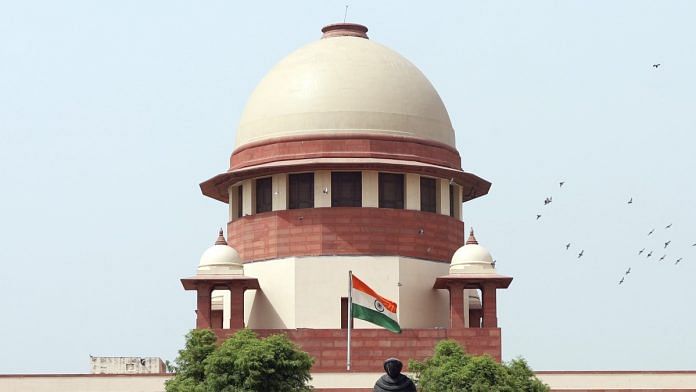
Thank you dear subscribers, we are overwhelmed with your response.
Your Turn is a unique section from ThePrint featuring points of view from its subscribers. If you are a subscriber, have a point of view, please send it to us. If not, do subscribe here: https://theprint.in/
Quite unfortunately, over the years delay in proceedings under the Insolvency and Bankruptcy Code, 2016 (hereinafter the ‘Code’) has systematically chipped away and in some cases completely obliterated the insolvency resolution timelines. In fact the post Covid-19 induced pandemic backlog coupled with the secular crippling of the Adjudicating Authority’s (hereinafter ‘AA’) functioning is such that we are fast approaching the pre-Code timelines for insolvency resolution in India. A languid approach to the issue at hand would perhaps lead one to express concern over the leveraged manner in the AAs across the country are functioning, however as goes the Say’s law ‘supply creates its own demand’ and thus novel solutions must be in the offing.
Instructive studies on the model timelines of insolvency resolution have highlighted that one major contributory factor that pushes stressed corporates towards liquidation pertains to delayed timelines leading to severe value erosion and eventual high haircuts.
Extrapolating the same to Micro, Small and Medium Enterprises (hereinafter ‘MSMEs’) one would conclude that the situation is more foreboding than ever. Prompted perhaps by the global pandemic and the ensuing stresses on corporate balance sheets the nodal ministry in the Government of India decided to enact the ‘Pre-packaged Insolvency Resolution Process’ (‘PIRP’) by way of an ordinance in April 2021. Surely wide ranging amendments and perhaps improvements have been introduced in so far as the MSME and resolution of their insolvency is concerned, yet the PIRP in harking back to the clutches of Sections 43, 45, 50 and 66 of the Code has failed to address crucial hurdles faced by the beneficiaries outlined therein.
What perhaps has been lost sight of is that the legislative intent for MSMEs under the Code was very clearly outlined by way of relaxations vide Section 240A in that the Code permitted erstwhile MSME directors/promoters to perform a dual role in the CIRP/PIRP, i.e. that of a ‘resolution applicant’ as at the same time being ‘ex-management/suspended directors’. Consonantly, a contradictory dilemma informs the Code with the Resolution Applicant seeking to push a duly approved and viable resolution plan while also being subjected to the scrutinising processes and rigour of avoidance applications vide Sections 43, 45, 50 & 66 of the Code.
This is not to aver that MSMEs ought not be subjected to the scrutiny of avoidance applications informing the resolution processes, however in practicality what is transpiring is that resolution of such debtor concerns is being held up much beyond the mandated period as per the Code solely because the outcome of applications vide Sections 43, 45, 50 & 66 would have a direct bearing on the viability and functionality of the Resolution Plan forwarded by said applicants.
The emerging thought on the subject may be gauged vide IBBI’s Consultation Paper published in April 2022 whereby such fraudulent transactions have been equated with commercial immorality. The said paper further goes on to extol the legislative purpose behind such application and imposes an obligation on the Resolution Professionals to ‘file applications in respect of avoidance transactions …found by him during the CIRP and liquidation process’. It thus becomes apparent that preserving commercial morality and penalising directors’ misconduct is prime on future agenda. While there can be no quarrel with such lofty idealism what is of grave concern is the admission on part of the IBBI that only a handful of applications have been disposed of by the AA and several such as pending post approval/implementation of the resolution plan.
The IBBI towards furthering its emerging animus seeks to dissociate such proceedings with the CIRP, i.e. permitting avoidance applications to remain on board beyond the conclusion of the CIRP process. However, there seems to be no attempt at remedying the quandary associated with exponential value deterioration with even a slight delay in the CIRP. Now consider the same for MSMEs what with their limited capital base and tight margins and the issues highlighted above become all the more pronounced and troublesome. It is thus with the above discussion in mind and the recent policy direction concerning avoidance transactions that this paper seeks to raise certain fundamental questions;
- Is it worth dismantling the certainty associated with a clean slate for the successful resolution applicant?
- Are recoveries from avoidance application such that they deserve to belie the stated goals of the Code vis-à-vis insolvency resolution?
- Would creditors of a debtor concern be willing to fund the hunt for bad money at the expense of good money recovery?
- Specifically with regard to MSMEs and similarly placed family run businesses, would it not make more sense to ensure that entrepreneurial fervour is not entirely destroyed especially considering that a suspended director is not entirely disqualified from being a resolution applicant?
- Ought the same strict yardsticks be imported to the PIRP regime considering that the suspended director would surely be more motivated and invested to ensure revival of the debtor concern?
Also read: SubscriberWrites: School education needs more incentives than just budget allocation
These pieces are being published as they have been received – they have not been edited/fact-checked by ThePrint.

COMMENTS